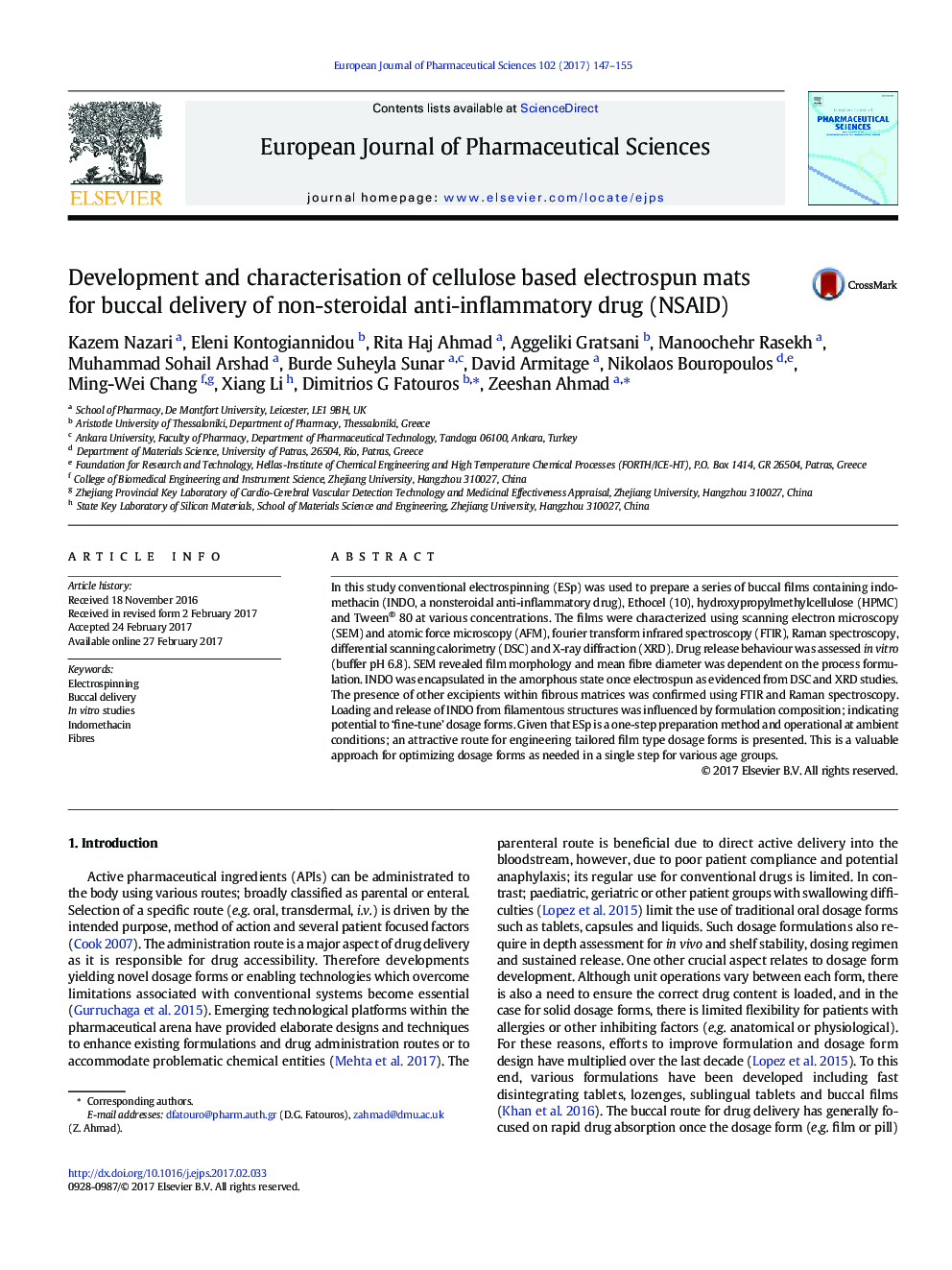| Article ID | Journal | Published Year | Pages | File Type |
|---|---|---|---|---|
| 5547812 | European Journal of Pharmaceutical Sciences | 2017 | 9 Pages |
In this study conventional electrospinning (ESp) was used to prepare a series of buccal films containing indomethacin (INDO, a nonsteroidal anti-inflammatory drug), Ethocel (10), hydroxypropylmethylcellulose (HPMC) and Tween® 80 at various concentrations. The films were characterized using scanning electron microscopy (SEM) and atomic force microscopy (AFM), fourier transform infrared spectroscopy (FTIR), Raman spectroscopy, differential scanning calorimetry (DSC) and X-ray diffraction (XRD). Drug release behaviour was assessed in vitro (buffer pHÂ 6.8). SEM revealed film morphology and mean fibre diameter was dependent on the process formulation. INDO was encapsulated in the amorphous state once electrospun as evidenced from DSC and XRD studies. The presence of other excipients within fibrous matrices was confirmed using FTIR and Raman spectroscopy. Loading and release of INDO from filamentous structures was influenced by formulation composition; indicating potential to 'fine-tune' dosage forms. Given that ESp is a one-step preparation method and operational at ambient conditions; an attractive route for engineering tailored film type dosage forms is presented. This is a valuable approach for optimizing dosage forms as needed in a single step for various age groups.
Graphical abstractDownload high-res image (238KB)Download full-size image
